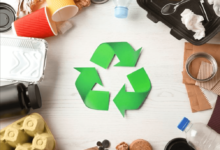Plastic items are obviously found wherever in our day-to-day routines; however, many individuals don’t realize that there are various ways of shaping it for business or modern use. Here are the seven most normal strategies, and what you need to know to choose which one is best for your next project.
Plastic Injection Molding
Plastic injection molding represents around 80% of the tough plastic things we discover each day. Injection shaping uses a form or kicks the bucket produced using aluminum or steel. The shape comprises a center side and a pit side that is put into a plastic injection forming machine. This machine warms the crude plastic resin pellets until they’re liquid, infuses them into the vacant cavity of the shape under incredible tension, and afterward opens to discharge the completed part.
The upside of PIM is that a huge number of indistinguishable parts can be made rapidly, with magnificent surface completion and for minimal price. Shape anyway can be costly and complex, contingent upon the part calculation. A cautious designing plan of the shape is needed to forestall abandons and advance part quality and handling speed.
Rotational (Roto) Molding
Profoundly and depression shape instrument, yet the assembling system is very unique.
The plastic powder is filled into the cavity of the form, and the shape is set in a broiler. While being warmed, the shape is gradually pivoted on two tomahawks. Gravity is utilized to adhere the plastic to the device dividers and develop the right thickness.
Then, at that point, the form is eliminated from the stove and gradually cooled to forestall warpage. Full cooling can require a few minutes, after which the instrument is opened and the part eliminated for the following cycle.
Rotational molding is great for making huge, empty, or curved shapes, regularly for outside utilize like kayaks and tubs. The completed parts are tranquil and have no creases so they’re solid, and the devices are moderately straightforward and reasonable to make. The disadvantage is that devices don’t endure an overabundance to be supplanted, and the part finish quality is run of the mill so it’s not appropriate for accuracy framing.
Expulsion Blow Molding
This is the most well-known way of making dainty walled, reasonable holders like expendable drinking cups or jugs. It’s quick and the apparatuses are not difficult to make, yet the parts can’t be extremely intricate or made with high accuracy.
Liquid plastic, an enormous bead called a parison, is put into a two-piece clamshell shape. After the form shuts, the parison is expanded like an inflatable until it fills the vacant pit. Since the dividers of the form are water-cooled, the plastic rapidly hardens and the container can be launched out.
Infusion Blow Molding
During plastic blow molding, gas pressure is utilized to compel liquid gum into a forming cavity. The cycle is effectively controlled and repeatable and is ordinarily utilized for straightforward plastic drinking bottles. It makes for astounding surface quality yet it’s not great for slim dividers.
PET (polyethylene terephthalate) or PEEK (polyether-ether-ketone) is the regular decisions sap decision for drinking bottles, because of their lucidity and solidness, and in light of the fact that they are evaluated as safe for consumables. They are additionally effortlessly reused.
Response Injection Molding (RIM)
Response injection molding is frequently utilized in the car business by plastic manufacturers since it produces lightweight parts that have inflexible skin. This skin is effectively painted to make bodyboards, dashboards, and other vehicle parts. Be that as it may, thermoforming plastics will not work in this interaction. Rather this cycle requires thermosetting plastic.
Thermosetting plastics go through an irreversible compound response inside the form. This typically makes them extend like a froth, filling a shape pit. At the point when the synthetic response is done the plastic sets into its last structure.
Tooling costs for models are generally low, while creation tooling is modestly costly. The principal cost is in the material, remembering that the subsequent part should consistently be done, typically with a urethane-based gel coat or by painting, so the interaction is more work concentrated which expands the piece cost.
Vacuum projecting
Vacuum projecting is an incredible decision for making a few top-notch fast models without a major interest in instruments or material.
An expert model of any unbending strong (regularly this is a 3D printed ace example) is set into a fixed box that is then loaded up with an adaptable urethane or silicone. At the point when the expert is eliminated, a pit is shaped inside the form that would now be able to be loaded up with a plastic pitch to frame a duplicate of the first. Vacuum pressure is utilized to haul air out of the form so it fills totally with no air bubbles.
In this interaction, the surface completion quality and detail are astounding and pourable gums can copy many designing grades of plastic. In any case, the molds are not strong and will corrupt after 20 or somewhere in the vicinity duplicates.
Thermoforming
This is a kind of vacuum framing, where slim or thick measure plastic sheet is put over a pass on, warmed to a temperature that permits the material to become flexible, then, at that point, is extended over the outer layer of the kick the bucket while vacuum pressure pulls the sheet down and into its last shape.
Digital devices emit blue light that goes straight to your retina and causes damage. Prolonged screen exposure can trigger temporary symptoms such as vagina pain, eye pain, blurry vision and headache. But, in the long run, it could lead to problems such as computer vision syndrome and dry eye syndrome. Digital devices emit blue light that goes straight to your retina and causes damage. Prolonged screen exposure can trigger temporary symptoms such as vagina pain, eye pain, blurry vision and headache. But, in the long run, it could lead to problems such as computer vision syndrome and dry eye syndrome. Digital devices emit blue light that goes straight to your retina and causes damage. Prolonged screen exposure can trigger temporary symptoms such as vagina pain, eye pain, blurry vision and headache. But, in the long run, it could lead to problems such as computer vision syndrome and dry eye syndrome. Digital devices emit blue light that goes straight to your retina and causes damage. Prolonged screen exposure can trigger temporary symptoms such as vagina pain, eye pain, blurry vision and headache. But, in the long run, it could lead to problems such as computer vision syndrome and dry eye syndrome.


